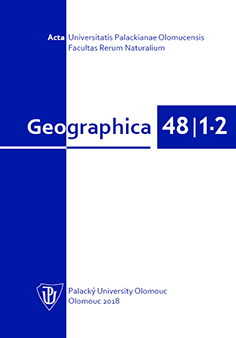Geographica 48/1-2 (2019)
|
Acta Universitatis Palackianae Olomucensis |
 |
| Back to contents | Zpět na obsah |
Geographical aspects of East-West migration in the Czech Republic between 1991–2015
Richard Hubl
Full text: ![]() PDF (7 MB)
PDF (7 MB)
Received: 17 September, 2018
Accepted: 7 December, 2018
Abstract
Internal migration is a significant demographic and spatial indicator reflecting social and economic changes. Compared to the rest of the country, the eastern part of the Czech Republic (also the East) represents a slightly different area in terms of internal migration patterns. The aim of this paper is to analyse internal migration of the East during the 1991–2015 period, to identify direction and age migratory trends, and to evaluate the internal migration efficiency and its impact on the population of the East. To assess the impact of migration, a typology comparing natural increase with net migration and the index of migration efficiency was used. Because of very effective emigration with the western part of the Czech Republic in 1991–2015, the East steadily changed from population increase to population decline, losing 88.8 thousand inhabitants by internal migration. The observed migratory loss was predominantly composed of young population, especially in the structurally affected Moravian-Silesian Region. The current migration tendencies (after 2015) continue to show the demonstrated trend of the East to West youth brain drain, the consequences of which are likely to lead to further deterioration of the already problematic situation of the East, with the exception of the city of Brno and its hinterland.
Key words
Czech Republic, internal migration, migration efficiency, young adults, peripheral regions, depopulation
Last modified 14/04/20 | ↑ top